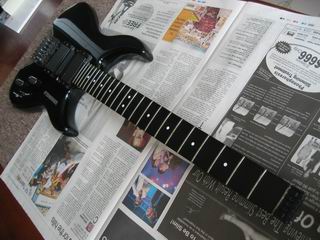 |
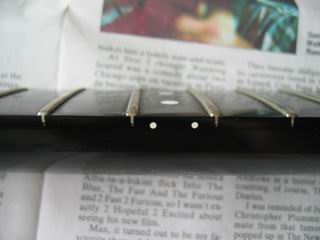 |
|
The frets
on the subject American made Steinberger GM-7TA model
have been dressed too low. There isn't enough "meat" or height on the
frets to play comfortably
especially when bending strings. A re-fret is in
order and the owner of the
instrument chose to go with my preferred and
highly recommended fretwire, which is similar to the popular Dunlop 6105
fretwire. The fretwire I use is 0.010" narrower than the
6105s.
|
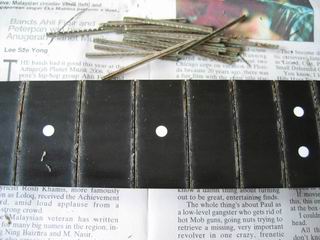 |
| The subject neck is made from solid
graphite and non-adjustable. The frets were glued down to the fingerboard and special care was
taken to heat the frets before removing them. The frets are removed with minimal chipping. You can
see traces of the residual glue along the fret slots.
|
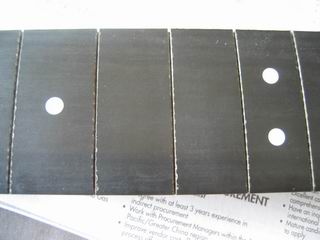 |
| With the frets removed, the neck still
has a slight backbow or convex profile. This is critical, as this will
compensate against the neck relief when the neck is strung to pitch.
The neck had about a .018" when the guitar was first brought to my
attention. This is a bit too much in my humble opinion. I would like
to see a relief of about .005" or less which is what I prefer on all necks
regardless of the instrument when we're done. The fingerboard
is carefully sanded to maintain the backbow or rather increase
the backbow or convex profile of the neck to what I
deem is optimal. With that done, we’re ready to fret. |
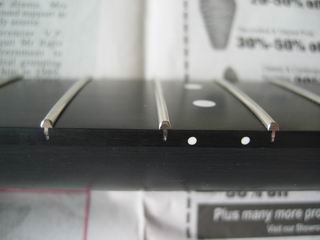 |
|
The frets are seated, dressed, filed flush, and
beveled. |
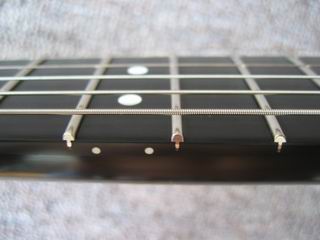 |
|
After the
neck is buffed, it's string up time and guess what?
The relief is about .002". The neck is literally dead straight! Thank
God!!! |
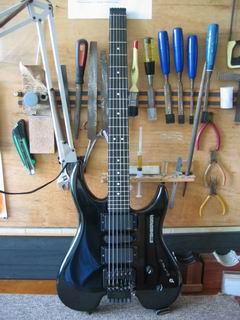 |
|
The guitar is set up and all ready to go. |






